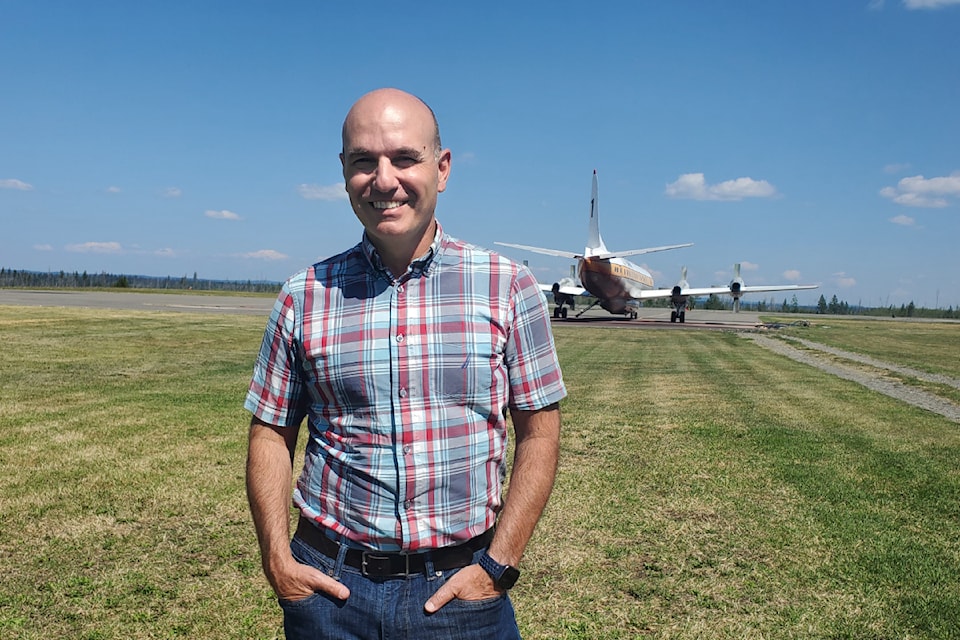Salmon are one of the main concerns in the wake of the Chilcotin River landslide, said B.C.’s minister of water, land and resource stewardship Nathan Cullen.
On Wednesday morning, Aug. 7, he flew over the Chilcotin River from its confluence at the Fraser River all the way to the lake that had formed behind the slide at Riske Creek.
“Dynamic is our most common term for this," he told reporters in Williams Lake. "Water is still moving through and undercutting. You can still see small slides happening and there will be likely more, but hopefully not near the massive scale that hit a week ago."
The water is very dirty in the river, he said, which is a concern for the upcoming salmon run.
“That is why we have been working on what’s the recovery plan? What can we do? And relying a lot on local and First Nations expertise as to what our options are for this particular sockeye run.”
He described the river as murky and said theirs was not a fish flight so they did not have the opportunity to drop low to see the water more closely or if there were any fish in sight.
Monitoring for salmon is ongoing and Cullen said some submarine cameras will most likely be installed in some of the key areas to see if the salmon are able to get through and if they are entering into the water of the Chilcotin River as it becomes more clear.
“You can see it already clearing up according to our local water specialist, even from yesterday where above the former lake it was still quite murky. It is starting to get back to its natural colour which is what we are hoping for.”
Cullen said he was meeting in Williams Lake with Tsilhqot’in National Government leaders Wednesday afternoon.
“We really want to lean in to everyone playing a good role in this because we all deeply care about this and all have something to contribute,” he said, adding they will continue to meet with First Nations and Fisheries and Oceans Canada.
There were initial concerns about the composition of the slide, which Cullen said is estimated to have been about 14 million cubic metres in size.
“It looks like it’s wearing down and that’s what we are going to have to keep our eye on over the next few days to understand what the salmon are facing.”
There is still a significant drop at the slide site and it could be a barrier to salmon trying to migrate.
“We are hoping for more erosion and leveling off of the river so they can get through.”
Connie Chapman, executive director of water, lands and resource stewardship, said water levels in the Chilcotin River have continued to decrease as expected.
“They have followed the model that was put forward and we are actually seeing the levels return to almost normal back to that input, output that we’d seen prior to the event,” Chapman said, but noted there are still high level of sediments in the flows.
She said she does not think there will be more debris from the event.
“During fall rains and spring freshet is the time when other debris would be mobilized or the debris that has settled out within the flows.”
Cullen said Wednesday morning they saw a lot of trees that were knocked down when the slide gave way that are now on the banks of the river.
“The scale and scope of this is hard to get your head around just from seeing videos. When you see it you really see the grandness of nature. You can see why people were concerned.”
B.C. Wildfire service has provided resources, such as helicopters and staffing, throughout the entire duration of the event in different capacities, Chapman said.
“Right at the beginning they were able to get helicopters into the air to support the initial assessment and evacuation piece,” she said. “For the remainder of the week it has ebbed and flowed in regards to the different needs.”


